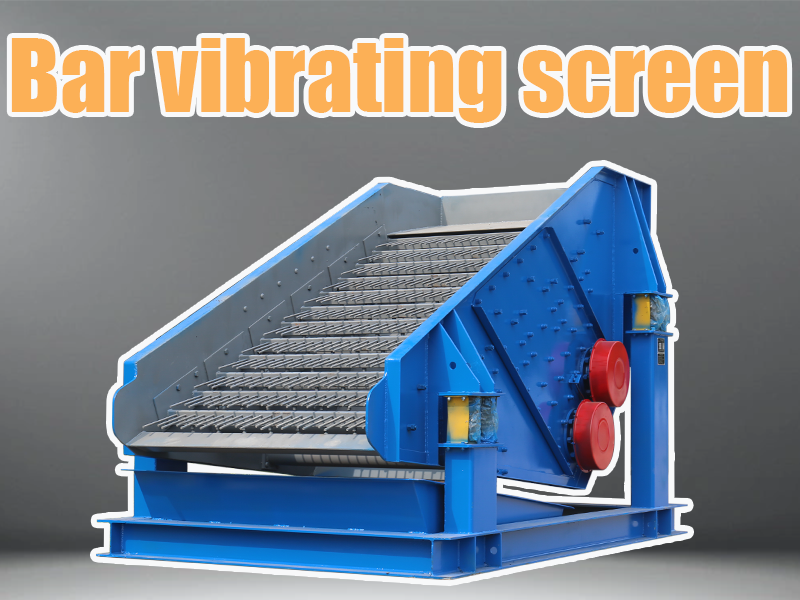Graphite green pellets—compacted graphite powder formed into spherical or cylindrical shapes—are a vital intermediate product in high-purity graphite processing. They are used in steelmaking, batteries, and carbon-based refractories. These pellets must meet strict size and purity standards before undergoing sintering or further processing. At this critical stage, the bar vibrating screen, also known as the grizzly screen, provides effective separation of undersized or oversized pellets and removal of unwanted fines.

- Understanding the Bar Vibrating Screen
Unlike fine mesh screens, the bar vibrating screen uses parallel, robust steel bars spaced at fixed intervals. It is typically used in coarse or pre-screening stages to remove clumps, oversized materials, or fines that compromise pellet uniformity.
Core components:
- Heavy-duty manganese steel grizzly bars
- Vibration motors or eccentric shaft exciters
- Adjustable bar spacing (30–100 mm depending on pellet size)
- Inclined screen deck (15–25° slope)
- Graphite Green Pellet Screening Challenges
Graphite pellets vary in moisture content, strength, and uniformity depending on binder content and compaction process. Key challenges include:
- Pellet breakage under vibration
- Clogging due to moisture or fine graphite dust
- Ensuring consistent size distribution before sintering
The bar vibrating screen meets these demands through gentle handling, open structure, and self-cleaning action.
- Advantages of the Bar Vibrating Screen in Pellet Processing
A. Minimal Pellet Damage
Compared to rotary or high-frequency screens, the bar screen applies lower surface stress. The open deck design allows pellets to roll smoothly without impact, preserving shape and minimizing fines generation.
B. Self-Cleaning Deck
Fine graphite particles often cause screen blinding in mesh-type equipment. The bar vibrating screen eliminates this issue with wide bar spacing and dynamic vibration, ensuring continuous operation.
C. High Capacity Output
A typical 1200 mm × 3000 mm bar screen can process up to 10–15 tons/hour of green pellets. Larger screens (1500 mm × 4000 mm) can handle 20+ tons/hour depending on pellet size and feed consistency.
D. Low Downtime and Maintenance
Grizzly bars are designed to resist abrasion from graphite and binders. They can be individually replaced without halting production. Screen maintenance intervals are typically over 30 days.
E. Protection for Downstream Equipment
Oversized or under-compacted pellets can damage sintering trays or reduce kiln efficiency. The bar screen ensures only qualified pellets reach the next stage, improving final product quality.

